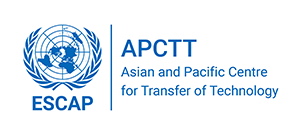Integrated Plant for Manufacturing Anthraquinone, Quinizarin and their Derivatives (India)
Indian consultancy and project management company offers to supply integrated plant for manufacturing anthraquinone, quinizarin and their derivatives. Anthraquinone is manufactured from phthalic anhydride and benzene in presence of anhydrous aluminium chloride. The product is isolated by treatment with sulphuric acid. Quinizarin is manufactured from para chloro phenol and phthalic anhydride in presence of boric acid and 10-12 % oleum. The product is then isolated by dilution with water. 1-amino anthraquinone and 2-amino anthraquinone are obtained by amination of corresponding sulpho anthraquinone with ammonia in a high pressure autoclave, the product is then isolated. 1,4-Diamino anthraquinone is obtained from quinizarin by first its reduction and then subsequent amination to get leuco 1,4 diamino anthraquinone which is then oxidized to 1,4-diamino anthraquinone. Solvent dyes are obtained by condensing quinizarin/leucoquinizarin with amines and other intermediates in methanol solution. The major equipments required are: CI reactor, High pressure MS autoclaves, MS reactor, MS tile lined reactors, MS lead lined reactor, stainless steel 316 reactors, MS rubber lined centrifuges (bottom discharge types), process pumps, air compressors, boiler (100 psi), hot oil unit (300 deg c), chilled water unit (+4 deg c), heat exchangers, SS rotary vacuum dryer, polypropylene filter presses with CI structure, storage tanks, pressure filter nutsches with agitator, rotary vacuum filters, laboratory equipments, effluent treatment plant. Environmental aspects: The manufacture of these products generates liquid effluent, solid wastes and air pollution. (1) Liquid effluent: The liquid effluents generated are mostly dilute sulphuric acid of varying concentrations. Depending upon the product, this effluent is treated with hydrated lime/ammonia to convert it into gypsum/ ammonium sulphate. Gypsum can be used for land filling and also for cement plants. Ammonium sulphate is used as fertilizer. The effluent after primary treatment is taken for secondary treatment and subsequently for tertiary treatment, using sand filters and carbon beds. The waste water can by recycled after passing through membranes. (2) Solid waste: There is no solid waste during the processing of these products. The solid sludge obtained is from two other sources - (1) Gypsum obtained by neutralisation of acidic effluent with hydrated lime. This can be filtered, dried and used in cement plants; (2) Sludge obtained after the bio treatment of the effluent will have to be incinerated. The waste left after incineration can then be disposed off. (3) Air pollution: The HCl gas generated at the first stage of reaction will be absorbed in HCl scrubber system to get HCl (liquid). Proper scrubber are available for handling ammonia gas and sulphur trioxide from oleum. The technology to be employed has rigorous controls on various steps during processing and this coupled with efficient methods for effluent treatment, will have very little effect on the environment.
Sector: Machinery & Equipment
Country: India
Area of Application: Chemical industry. Anthraquinone is the basic raw material for many of its derivatives which are used in the manufacture of vat dyes. Quinizarin and its derivative leucoquinizarin are used for the manufacture of vat dyes and solvent dyes. Solvent dyes are used for colouring of plastics, petrochemical products, lacquers and aluminium foil printings.
Keywords: Manufacture of anthraquinone, quinizarin and their derivatives
Advantages: The VAT dyes obtained from anthraquinone derivatives are used for cotton dyeing and hold the advantages of having fastness towards washing, perspiration, sunlight and brightness of shades.
Environmental aspects:
Development Status: Fully Commercialized
Legal Protection:
Technical specifications:
Transfer Terms: Consultancy , Technical Services , Turnkey, Others
Target Countries:
Estimated cost (US$):
Upload any relevant document:
Contact Person: UN-ESCAP/APCTT
Address: C-2 Qutab Institutional Area
City: New Delhi
Country: India
Zip/Pin Code: 110016

